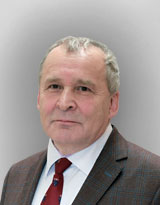Вам может быть интересно:
Архив журнала
Что стоит за названием молдавского языка?
- 786
- Файл статьи: PDF
DOI: DOI 10.12345/1999-2629_2021_02_03
Аннотация: В свете концепций национальной идентичности рассматриваются существующие подходы к наименованию и определению сущности языка Республики Молдовы. Рассматривается метадискурсивный аспект спора, касающийся природы объекта-языка, выводящий на фундаментальные вопросы языкознания (о чем идет речь, когда язык используется как объект дискурса? Где начинается и заканчивается язык? Насколько компетентны в этом вопросе лингвисты?). «Молдавский язык» представляет собой сущность с изменяемой геометрией, пластичность которой допускает самые разнообразные и противоречивые аргументы, основанные на трех различных
принципах: 1) позитивистском — существуют народы, и каждый народ является «носителем» определенного языка (и именно потому, что он является носителем определенного языка, он и есть народ); 2) романтическом — чтобы построить литературный язык, интеллигенция должна опираться на язык народа; 3) административнокомандном — для строительства литературного языка интеллигенция (писатели, поэты, языковеды) должна обучать народ говорить на правильном языке. Это сосуществование трех принципов в языковых дискуссиях в Восточной Европе имеет все признаки порочного круга, в котором причина и следствие постоянно занимают место друг друга. Молдавский язык, действительно «существующий» в умах тех, кто его так называет, является принципом утверждения идентичности, не столько средством общения, сколько критерием общности. Но в то же время он
является и средством не-общения, стремящимся быть непонятым со стороны того, от кого хотят отличаться любой ценой, чтобы быть самими собой
Ключевые слова: молдавский язык; румынский язык; языковая политика; национальная идентичность; дискурс о языке; литературный язык; принципы орфографии; орфография
Abstract: In the light of the concepts of national identity, the article looks at the existing approaches to naming and defining the essence of the language of the Republic of Moldova. The study deals with the meta-discursive aspect of the dispute concerning the nature of the object-language, which leads to the fundamental questions of linguistics (What is it about when we say that language is used as an object of discourse? Where does the language begin and end? How competent are
linguists in this matter?). The "Moldavian language" is an entity with a variable geometry, the plasticity of which allows for the most diverse and contradictory arguments based on three different principles: 1) positivist – there are nations, and each nation is a "native speaker" of a certain language (and precisely because it is a native speaker of a certain language, it is a people); 2) romantic – in order to build a literary language, the intelligentsia must rely on the language of the people;
3) administrative-commanding – in order to build a literary language, the intelligentsia (writers, poets, linguists) must teach the people to speak the correct language. This co-existence of the three principles in language discussions in Eastern Europe has all the hallmarks of a vicious circle in which cause and effect constantly take each other's place. The Moldovan language, which really "exists" in the minds of those who call it that, is the principle of asserting identity, not so much a means of communication as a criterion of community. But at the same time, it is also a means of non-communication, striving to be ununderstood by someone from whom they want to differ at any cost in order to be themselves
Key words: the Moldovan language; the Romanian language; language policy; national identity; discourse about language; literary language; principles of orthography; orthography
Для цитирования:
Серио, П. Что стоит за названием молдавского языка? / П. Серио // Политическая лингвистика. – 2021. – №2 . – С. 33-56. DOI DOI 10.12345/1999-2629_2021_02_03.
For citation
Seriot, P. What Is Behind the Name of the Language of the Republic of Moldova? / P. Seriot // Political Linguistics. – 2021. – №2 . – P. 33-56. DOI DOI 10.12345/1999-2629_2021_02_03.


